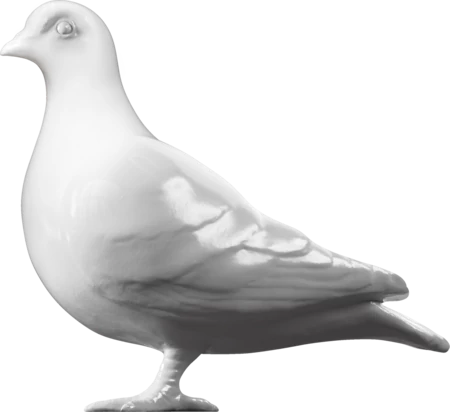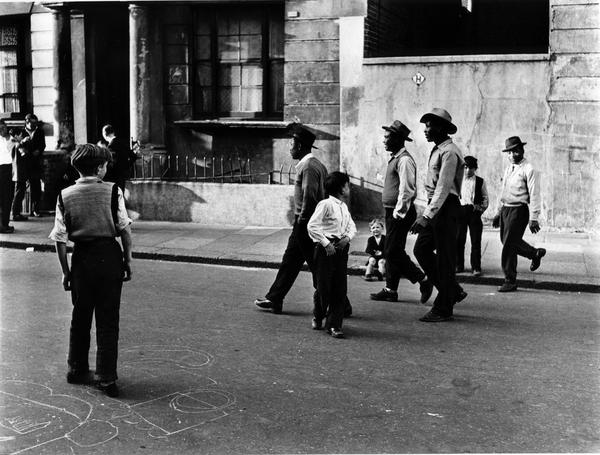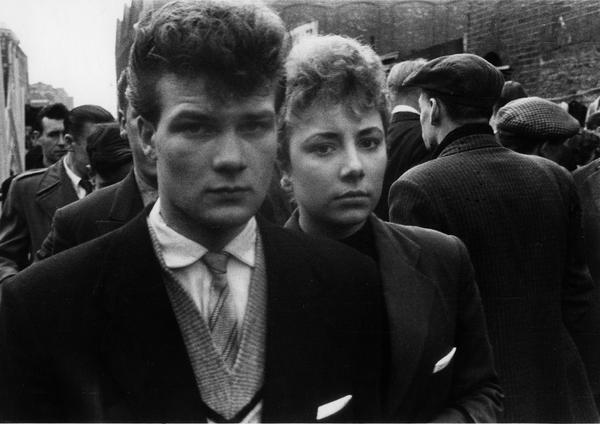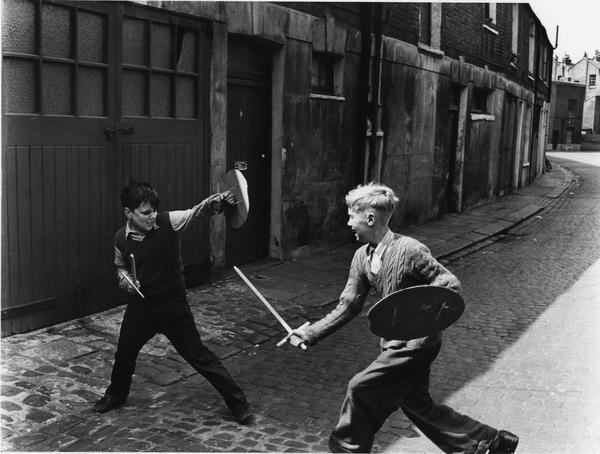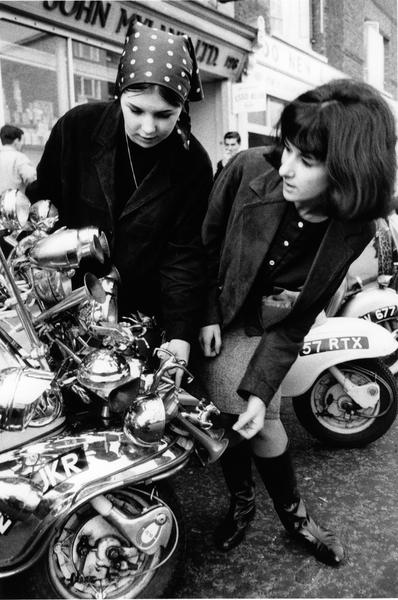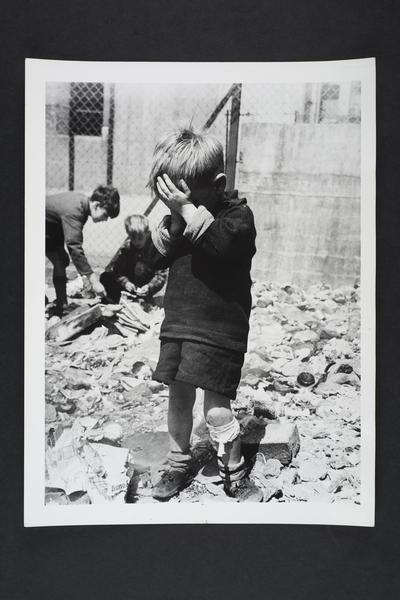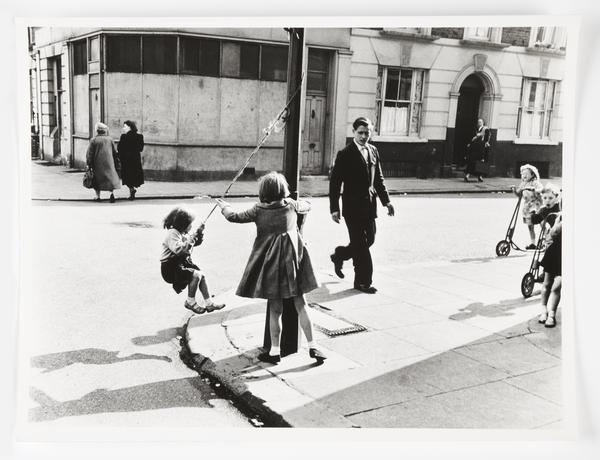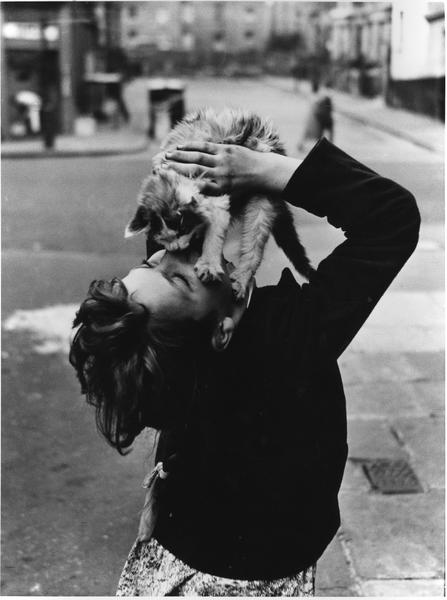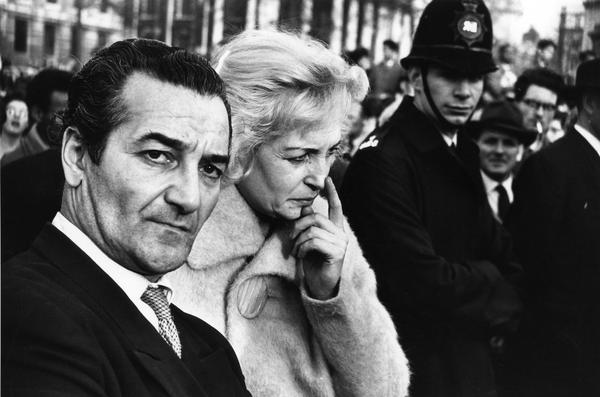Roger Mayne’s photographs of post-war London
Regarded as one of the masters of British photography, Roger Mayne empathetically photographed daily life in the capital and beyond.
North Kensington
1929–2014
Capturing a moment
Suited workers in rush hour, schoolchildren at lunchtime, traders on Petticoat Lane: Mayne captured the breadth of life in London. He focused his lens on the city’s people, their emotions and their relationships. His photos are dynamic and detailed snapshots of time. They reel you in.
Mayne produced a vast and distinguished body of work during his lifetime. But he’s best known for his black and white documentary photographs of the communities in North Kensington. Many of these photographs are in our collection.

Capturing life lived on west London streets.
Learning his craft
Mayne was a self taught photographer. While studying chemistry at Oxford University, he encountered the work of influential photojournalist photographers like Henri Cartier-Bresson and Walker Evans. He immersed himself in his hobby. After graduating, his documentary photographs of the making of a ballet film were published in Picture Post magazine in 1951.
“Mayne’s early works offer a window into the rhythm of post-war life”
He moved to west London in 1954 and began work as a freelance photographer. Mayne’s early works offer a window into the rhythm of post-war life. Lively photos of new teenage subcultures, like the Teddy Boys and the Teddy Girls, sit alongside visual reminders of the Blitz, such as bomb damage in the City.
In June 1956, his exhibition Photographs From London was put on at the Member’s Room of the Institute of Contemporary Arts. His first London solo show, it cemented his reputation as a social realist photographer, depicting human subjects against the social and political circumstances in which they live.
Photographing North Kensington
The same year, Mayne stumbled upon Southam Street in Notting Dale, near the more upmarket area of west London where he lived. Residents there lived in overcrowded, decaying or bomb-damaged houses. So many spent their time out on the street. This busy outdoor life caught Mayne’s eye.
With his Zeiss camera around his neck, Mayne began photographing the Notting Dale community. He captured a carefree version of childhood – with boys playing football or girls swinging on a lamp post – that contrasted his own strict upbringing. The photos also explored teenage life, family life, new styles in dress and dance, and the arrival of migrants from the Caribbean.
It was a labour of love. He took around 1,400 photographs there before the houses were demolished as part of a slum clearance programme in 1961. New council flats in the Brutalist Trellick Tower took their place.
“The reason for photographing the poor streets is that I love them and the life on them”
Mayne experienced Notting Dale as an outsider. His photographs represent his vision, as a middle-class man, looking in on the area’s working-class communities.
But he’d also befriended those that lived there and they became used to – often oblivious to – his presence. He photographed with empathy and, as a viewer, you feel immersed in the lives of his subjects. “The reason for photographing the poor streets,” he wrote in a 1959 article, “is that I love them and the life on them.”

A group gambling on Southam Street.
One of Britain’s most celebrated photographers
Mayne’s talent behind the camera was widely celebrated during his lifetime. His photographs were featured in publications such as Vogue, The Times Educational Supplement and the Sunday Times. In 1986, the Victoria and Albert Museum staged a major retrospective of his work.
His later photography turned from London to the Mediterranean, and from exclusively black and white to some colour. And while he took up etching, drawing and painting in his later years, he continued to photograph and advocate for the visual arts until his death in 2014.
